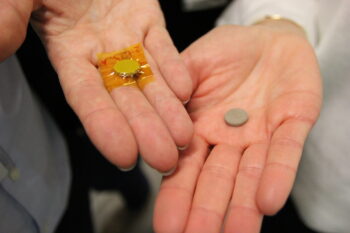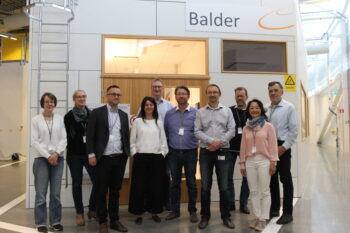A step closer to understand the MSWI ashes composition
E.ON, Fortum Waste Solutions, Stena, Sysav and NOAH together with researchers from RISE (Research Institute of Sweden) and Chalmers University of Technology (Gothenburg, Sweden), have used beamline Balder at MAX IV Laboratory (Lund, Sweden) to identify chemical speciation of copper, zinc, antimony and lead in incineration ashes which can be useful for classification of bottom ash (slag) material as hazardous or non-hazardous and for the optimization of further processing of fly ash either for stabilising or for extracting metals from the ash.
Due to the low metal concentration in incineration ashes and the complex ash matrix, it is not possible to use traditional lab-based method for determining chemical speciation. Synchrotron-based X-ray absorption spectroscopy (XAS) has been identified as one promising method that could.
In the Advanced spectroscopy speciation of hazardous metals in waste incineration ashes project, treated and non-treated fly ash and fresh and aged bottom ash were studied from five different Swedish facilities
covering different types of combustion technologies (i.e. CFB, rotary furnace and grate). The measurements were carried out using XAS at Balder at MAX IV Laboratory in Lund (Sweden) to find out the chemical speciation of copper, zinc, antimony and lead.

The ashes are ground and pressed into tablets before carrying out measurement at Balder.
Photo: Stena Recycling
The absorption edge for copper, zinc, antimony and lead was measured in all the samples included in the study. In addition to these measurements, a reference library with open access was created. In total, XAS spectra were measured for 43 relevant reference chemical compounds. The method that the project focused on is considered to have great potential for determining the form of occurrence of zinc and copper provided that additional references are identified and included in the library.
In this project a functional analysis method, that has the potential to be industrially viable in the future has been developed. The results of possible speciation are, in view of what has been published in the literature, significant. However, in order to draw correct conclusions about different influencing factors, much more targeted analyses are required. XAS has the potential to be used by the waste industry not only for incineration ashes but also for other types of wastes.

The project members from Fortum Waste Solutions, Sysav, Stena and NOAH and researchers from RISE, Chalmers University of Technology and MAX IV. Source: Stena Recycling
PROJECT INFO:
NAME: Advanced spectroscopy speciation of hazardous metals in waste incineration ashes
PROJECT START: October 2018
DURATION: 19 months
PARTNERS: Chalmers University of Technology, Lund University – MAX IV Laboratory, Fortum Waste Solutions AB, NOAH AS, Sysav Utveckling, Vinnova, Avfall Sverige, Energiforsk AB, E.on, Stena Recycling AB
FUNDERS: Vinnova (The Swedish Innovation Agency), Avfall Sverige (The Swedish Solid Waste Association), Energiforsk Askprogrammet.
LINK TO THE SCIENTIFIC PUBLICATION:
https://pubs.acs.org/doi/10.1021/acs.energyfuels.0c02226
LINK TO THE REPORT (in Swedish with summary in English):
Swedish with summary in English
Vinnova short report in English
LINK TO INCINERATION ASH RELATED INFORMATION:


